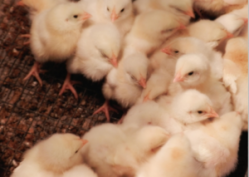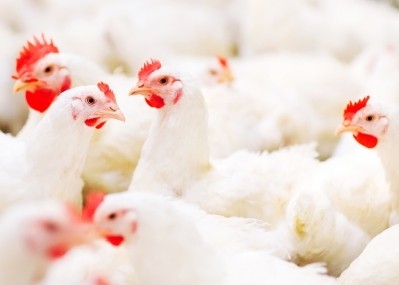DSM carotenoid product awarded GRAS as a nutritive antioxidant for breeder hens

The Dutch group said it followed FDA procedures to establish that Carophyll Red is GRAS under the intended conditions of use. This process included convening an expert panel to review the necessary product safety data and then submitting a voluntary notification to the FDA.
The rating allows for the carotenoid product to be fed at 6 parts per million of complete feed for breeder hens.
Carophyll Red is already recognized as an effective antioxidant and performance enhancer for poultry breeders by the European Food Safety Authority (EFSA), said DSM.
Although originally used as way to improve egg yolk color and skin pigmentation, the company said it sought this GRAS label for canthaxanthin as part of its MaxiChick project. That initiative sees Carophyll Red combined with an active form of vitamin D3, an additive known as Hy-D.
There can be a difference of about 40 chicks between breed potential and the numbers of chicks per hen that producers see, which can lead to economic difficulties for farmers, said Rual Lopez-Ulibarri, DSM innovation project director.
He told FeedNavigator the use of the antioxidant supplement in addition to a vitamin necessary for bone growth helps boost the numbers of chicks hatched.
The FDA GRAS recognition, continued Lopez-Ulibarri, opens new doors for DSM in that it can now offer the additive to US breeder companies and to explore the potential for producing more and stronger chicks.
Antioxidant capacity in egg yolk
When canthaxanthin is fed to breeder hens, the compound creates deposits in egg yolks, he said.
“This increases the antioxidant capacity in the egg yolk, which is very important since the cell division happening in the fertile egg during chick embryo development leads to a considerable amount of pro-oxidant substances affecting lipids, proteins and even DNA sequences,” said Lopez-Ulibarri. “Therefore, there is a strong need for a local antioxidant and the only ones available in the yolk are vitamin E and carotenoids, such as canthaxanthin.”
Additionally, some of the research demonstrates positive benefits in growth and breast meat yield for chickens whose mother received the combined supplements, he said.
“The proposed dose in feed does not increase consumer exposure beyond the established ADI (Acceptable Daily Intake), which is set at 150 mg/p/d in the US,” the company reported. “DSM´s canthaxanthin (Carophyll Red 10%) meets the specifications stated in 21 CFR 73.75 (Code of Federal Relations Title 21) and is safe for both animals and humans, when used at the intended rate.”
Market response
The product has been subject to more than 70 tests in several countries, said Lopez-Ulibarri, involving involved chickens, ducks and turkeys.
DSM received an international patent for both canthaxanthin and its vitamin D3 supplement for use independently or in combination for ‘fertility, hatchability, egg production and reduced early embryo mortality’ in 2014.
Demand for the canthaxanthin product in combination with vitamin D3 has been growing, Lopez-Ulibarri said. “The breeder application is responsible for about 40% of this growth in the last two years,” he added.
Research results
In one research study examining the effects of canthaxanthin use and published in Poultry Science, 396 birds were fed 6 mg/kg of a canthaxanthin supplement to test effects on body weight, laying rate, mortality and fertility, said researchers. The supplement was fed for 24 weeks.
The birds were split into two groups, one which received the supplement and the other which did not, researchers said.
Although body weight, mortality and laying rate were not altered by use of the supplement, there was a boost to breeder fertility, improved hatchability and decreased embryo mortality, researchers found.
The hatchability of eggs from control birds was 83% and from birds getting the supplement was 86.2%. And, the hatchability of fertile eggs was 91.3% for control birds compared to 93.7% of treated birds.
“The supplementation of broiler breeder diets with canthaxanthin improved the hatchability rate, fertility, and reduced the presence of thiobarbituric reactive substances in eggs,” said the scientists.
Source: Poultry Science
Title: Effects of canthaxanthin on the productive and reproductive performance of broiler breeders
DOI: 10.3382/ps.2011-01582
Authors: A. P. Rosa, A. Scher, J. O. B. Sorbara, L. S. Boemo, J. Forgiarini, and A. Londero















